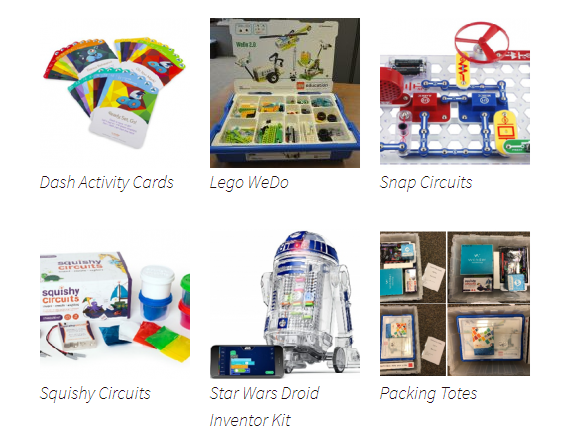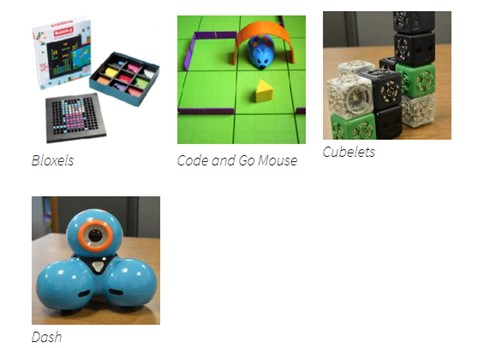Ch-ch-ch-changes. The Indiana State Library’s Professional Development Office has updated our circulating technology and virtual reality kits! Tech and VR kits can be checked out for up to 30 days and be used in patron programming.
Tech Kit
The Tech Kits are filled with technology and robotics devices that can be used with your patrons. Reservations for the kits can be made online. Public libraries that would like to check out the Tech Kit need to complete the online Moodle course “Tech Kit Training.” The course can be taken at your own pace, is worth one TLEU and must be completed before reserving the kit. You’ll need to create a free Moodle account to access the training. Tech kits can be checked out for up to 30 days, will be sent through InfoExpress and will arrive in two clear totes.
Tech Kits contain one each of the following:
- Bloxels
- Code and Go Robot Mouse Activity Set
- Cubelets
- Dash Robot
- Dash Challenge Cards
- Lego WeDo
- Snap Circuits
- Squishy Circuits
- Star Wars Droid Inventor Kit
 VR Kit
VR Kit
The State Library now has Oculus 2 virtual reality equipment! The kit can be checked out for up to 30 days and can be used for patron programing. To check out the kit, you’ll need to contact your regional coordinator to schedule an in-person training when the kit is dropped off. You can learn more about the Oculus Quest 2 here.
The kit comes with:
- One set of Oculus Quest 2 Virtual Reality Equipment (including head set, two hand controllers, two AA batteries, one power adapter and one charging wire).
- Downloaded games list on Oculus Quest 2 VR Kit.
If you’d like to learn more about the Tech and VR kits, as well as the NASA@MyLibrary STEM kits and Breakout Boxes, check out our Continuing Education website.
This blog post was written by Courtney Brown, Southeast regional coordinator from the Indiana State Library’s Professional Development Office. For more information, email Courtney.


